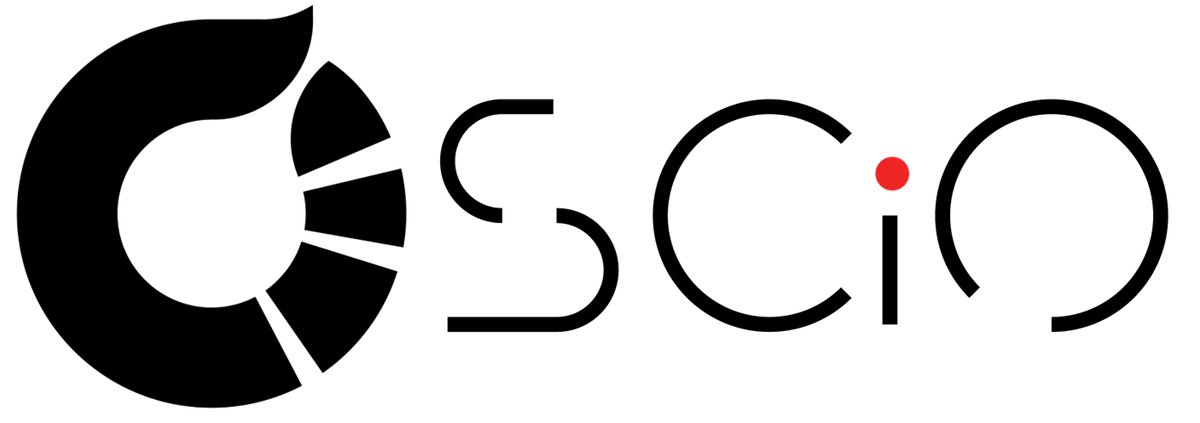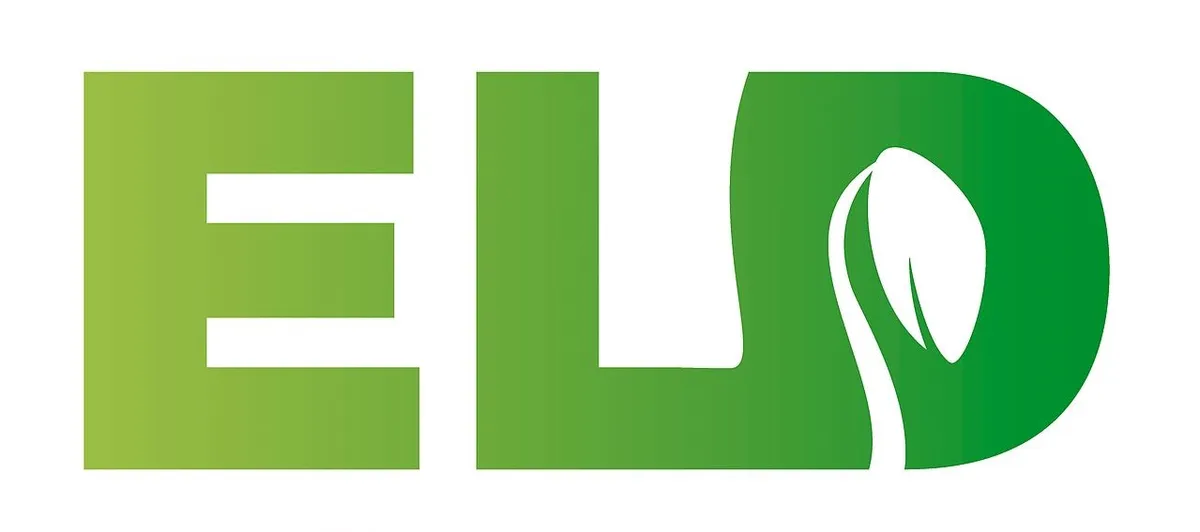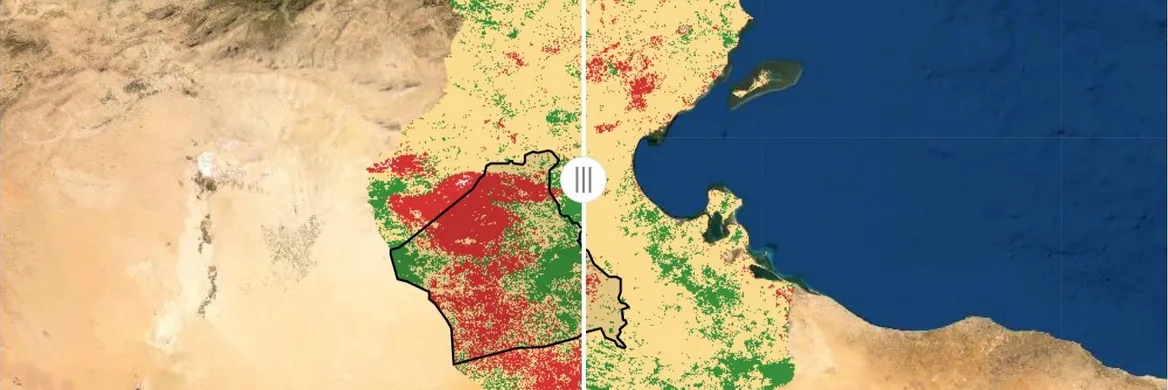
LUP4LDN Tool wins the GEO-LDN Competition
The state-of-the-art LUP4LDN tool helping to address Land Degradation wins the GEO-LDN Competition and will receive financial and technical support to transform their prototype into an operational and scalable tool.
- Home
- Land Use Planning for Land Degradation Neutrality - LUP4LDN
About the competition
The LUP4LDN tool (Land Use Planning for Land Degradation Neutrality) was presented at the international technology innovation competition GEO-LDN, launched by the Group on Earth Observations (GEO) Land Degradation Neutrality (LDN) Initiative in partnership with the United Nations Convention to Combat Degradation (UNCCD) Secretariat. The objective was to design and build software analytics solutions to support more transparent and well-informed land-use decisions at the local to national level across the globe. Thus, it aims to feed into innovation and collective action in order to address LDN by including subnational actors and communities in combating land degradation. The competition, guided by a specific framework, included 36 different countries and lasted 5 months, from a virtual briefing, virtual pitches (recordings: session 1 and session 2) to arrive at an award ceremony announcing the winners. From a total of 23 proposals, 3 were selected as finalists, including the LUP4LDN tool.
The GEO-LDN
competition
involved a pitch session presenting the tool, what it entails and its target
users. It also required a live presentation of the beta version. SCiO and
the team presented the live prototype to its target users such as Land use
planners, national and sub-national organizations active in land use/land
management (LU/LM) planning, policy makers, land users and research agencies,
to capture the last user-insights before its launch.
The judges of the competition acknowledged the benefits of the tool and witnessed positive feedback from users:
“LUP4LDN is a tool that greatly helps us to understand where to focus restoration activities and design scenarios for reducing land degradation” Mrs. Attia Rafla, Ministry of Agriculture, Tunisia.
After a pitch talk, a live presentation of its beta-version, the award ceremony took place at the end of the UNCCD nineteenth session of the Committee for the Review of the Implementation of the Convention (CRIC 19). The tool won first place at the competition helping encourage users to discover, use and adopt the tool!
About the tool
The state-of-the-art LUP4LDN tool, aims to address land degradation, considered by the UNCCD as a growing threat to global security.
Land Degradation Neutrality (LDN) strives to achieve the SDG target 15.3 which is to combat desertification, restore degraded land via land use management and planning that results in a land degradation neutral world i.e., not net land degradation.
The tool has been designed to help planners focus on where to undertake land restoration efforts and which Sustainable Land Management (SLM) intervention to choose. Its target users include land use planners, national and sub-national organizations active in land use management, policy makers, land users and research agencies.
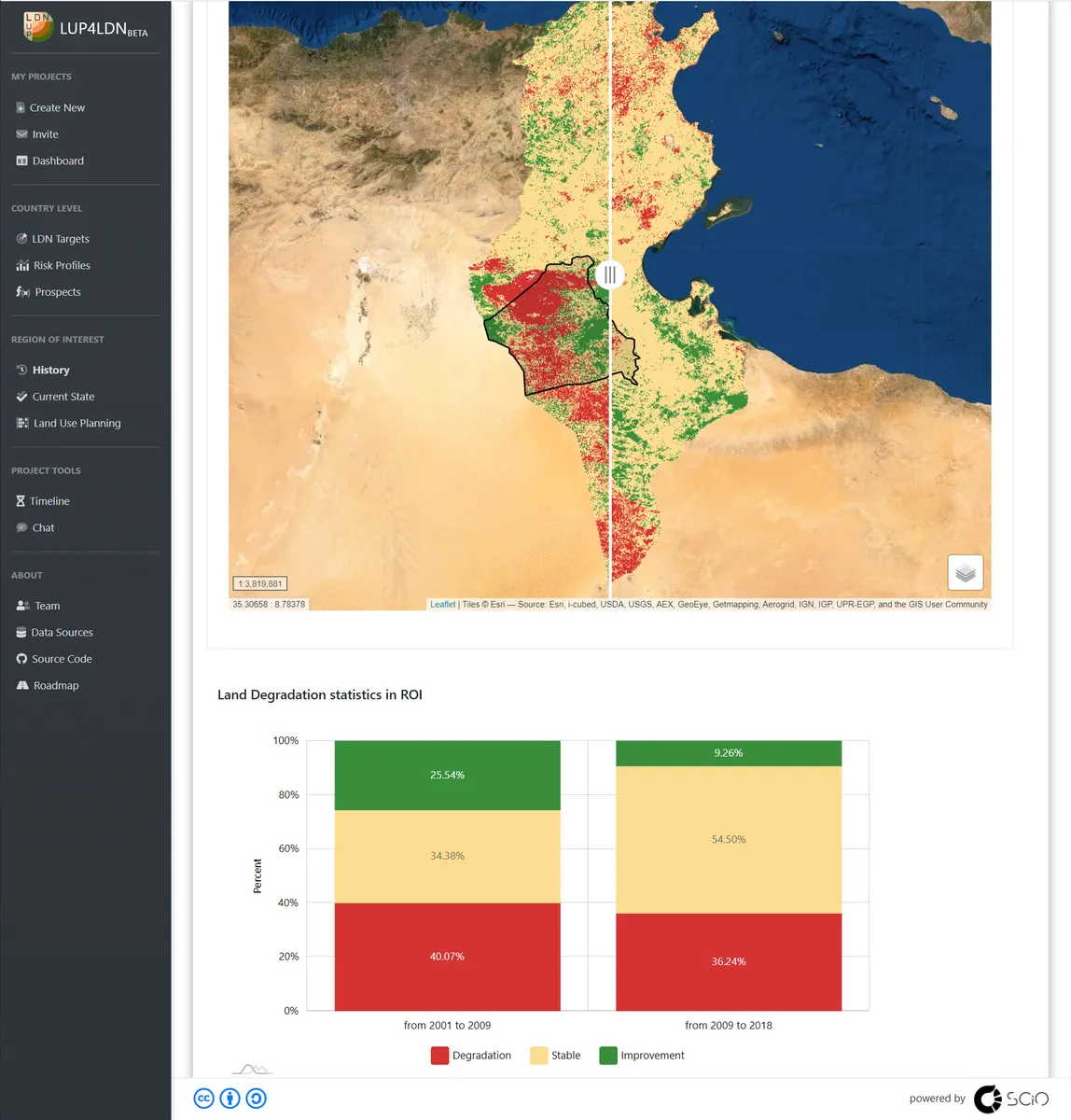
Screenshot of LUP4LDN beta-version
What does it do?
Using state-of-the art science the tool operates as follows:
- Applicable everywhere, to any user-defined geographical or administrative unit. When using the tool, the planning process will refer to the selection of a context, country, history, and level. The tool uses relevant datasets to fit into area extent.
- Facilitates open dialogue. Once the context and level are chosen you can select stakeholders to participate in the project permitting you to interact, chat, collaborate, share new ideas and innovate for land degradation neutrality.
- Uses local knowledge. By giving a voice to local stakeholders that know more at local level in terms of land management and demographics (gender, age, etc.).
- Includes WOCAT’s SLM frameworks and the global state-of-art SLM Global Database (DB) (recommended by UNCCD). The tool provides interoperability and links to robust tools such as GeOC (Global Geoinformatics Options by Context), WOCAT, Trends.Earth and ELD knowledge hub helping to retrieve data from diverse sources, improving data relevancy to the context, level and beneficiaries targeted for better adoption. Following the relevant links, each user can visit the corresponding WOCAT page, go through detailed information for each SLM and assess it in terms of its impact for a given Land use type to uniquely provide a best-fit, innovative and sound way to anticipate new land degradation (NEW-LD). The solution is shared with the project team and, if agreed, the SLM is adopted for that specific area. The tool assesses its positive impact and translates it into data visualization so all types of user types can understand.
- Centralizes information making it accessible, open sourced but secured. The tool has a dashboard centralizing and visualizing information in one place, making collaborative work for impact more efficient. Via the security controls, each user has access only to the information of the projects they participate in, ensuring complete control of content and ensuring optimal security.
- Uses a fully participatory tool development process. The tool involves multi stakeholder processes (e.g., workshops) improving decision-making, formulation, and evaluation of land use (LU) and land management (LM) transition scenarios through responsive visuals (e.g., maps, charts) generated by Trends.Earth and the LUP4LDN tool. In turn the tool anticipates impacts (LD gains and losses) and trade-offs towards achieving land degradation neutrality (LDN).
Who’s involved?
Effectively, Teamwork makes the dream work. Starting in September 2020, a consortium was established, composed of SCiO as a leader of a team including International Center for Agricultural Research in the Dry Areas (ICARDA), the World Overview of Conservation Approaches and Technologies (WOCAT), Claudio Zucca, International land degradation and desertification expert from Università degli Studi di Sassari and the Economics for Land Degradation Initiative (ELD).
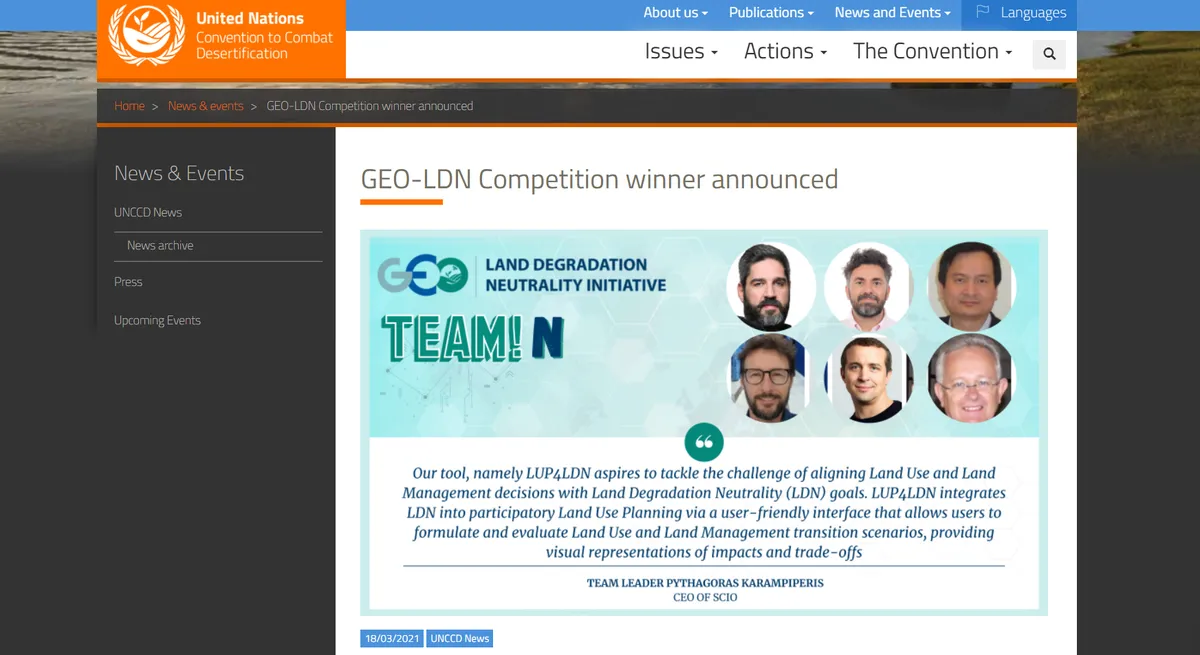
Screenshot of the UNCCD website with the announcement of the GEO-LDN competition winner
Next steps to success
The main milestones for the tool are the completion of the tool’s functionality by May 2021, the optimization of its infrastructure in August with user consultation, scaling up to global coverage in October, and the execution of LUP4LDN piloting and capacity building activities during November and December. This will facilitate uptake of the tool, and long-term stakeholder support and use.
In case you want to get further details on the data sources used in LUP4LDN you can visit the relevant page and follow the provided links, while the complete source code is published in the project’s GitHub repository. Please find more information on the right side of the page.
Text written by:
 Italy
ItalyKnow more
More information on the competition here.
To see the sneak preview workshop, click here.
To see the presentation of the tool’s beta-version here.
Explore, discover, adopt the tool here.
To meet the winning team, click here
Contact person
 Switzerland
Switzerland